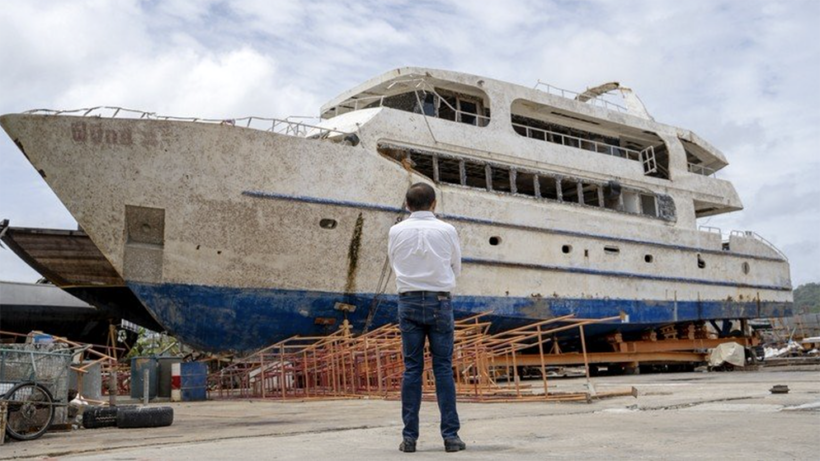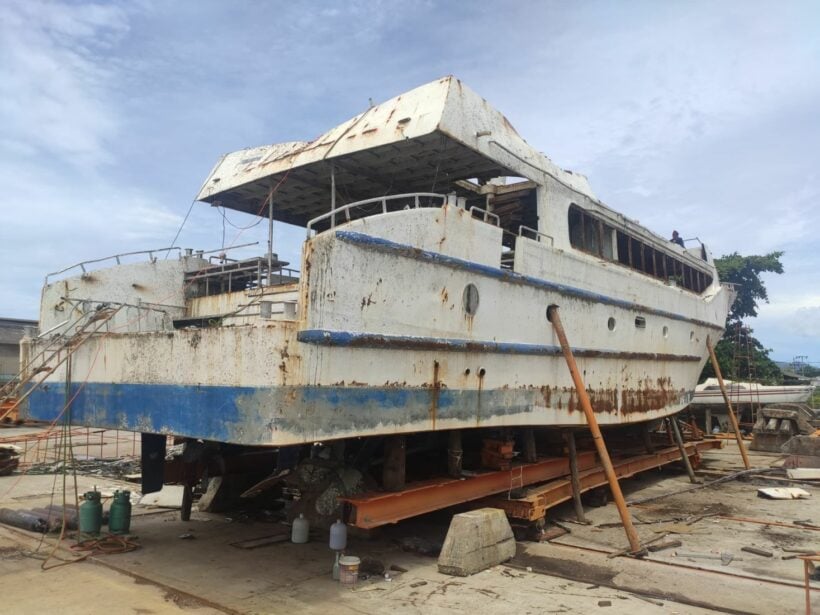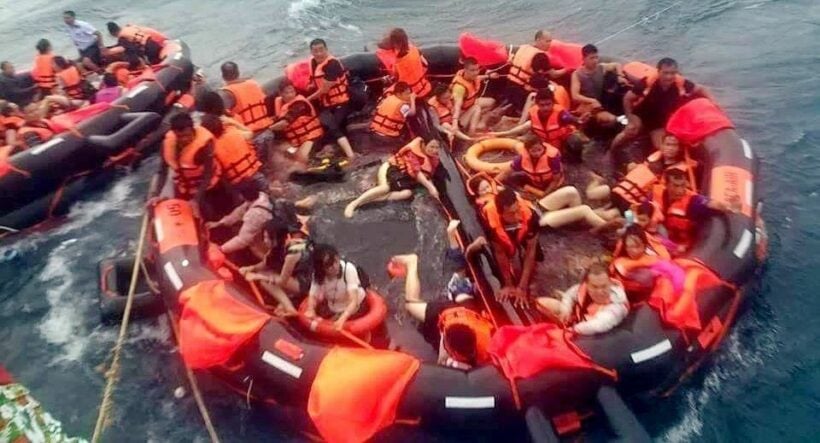Four year anniversary of Phuket’s sinking of the ‘Phoenix’ – 46 people drowned

This week commemorated the fourth anniversary of the rescue of the 13 members of the Wild Boar football team from the Tham Luang Caves in Chiang Rai, a story that gripped international audiences. That story had a happy ending.
But the ongoing drama in northern Thailand masked a much sadder story, that of the sinking of the tour boat, the ‘Phoenix’ in Phuket in the late afternoon of July 5, 2018. All the media attention was on the recovery of the 12 teenagers and their 23 year old coach from the flooded caves. The sinking of the Phoenix barely broke the news.
A sudden storm, which had been forecast earlier in the day, and seen on radar as it approached the southern Thai island, caused the capsize and subsequent sinking of the dive and tour boat off the southwest coast of the island.
46 people died and 3 were missing, as the double-decker tour boat slipped beneath the waves. The vessel was carrying 101 people at the time, including 89 tourists, as it returned from a diving tour of Koh Racha. All but 2 of the passengers were Chinese.
Another boat, the ‘Serenita’, also capsized in the same storm. All 42 passengers aboard that vessel were rescued.
The boat set off on the morning of the disaster, despite a “severe weather warning” being issued the day before.
Somjing Boontham, the captain of the Phoenix, told investigators later that the waves reached 5 metres in height, a claim believed to have been exaggerated. He said that his crew members “frantically lowered the lifeboats and he urged the passengers to put on their life jackets”.
The investigation also showed that the crew, and the captain, were the first in the lifeboat, with many of the panicking tourists stuck inside the sinking vessel.
Some passengers, including children, made it to the lifeboats.
46 people perished (sometimes reported as 47 in some media). A Thai diver, 37 year old Night ‘Joch’ Kludnak, also died after surfacing from the wreck during salvage operations.
The subsequent investigation showed that the boat was owned by a Chinese investor through a standard Thai shelf company. Engineers and naval architects testified that the design had many inadequacies, making it unfit for the purposes it was being used. They included nearly a tonne of concrete blocks that were used to increase the boat’s displacement but weren’t secured in the bilge of the boat.
The boat had one watertight door, it should have had four. And the windows, smashing when the water hit them, were not marine-grade glass.
The buoyancy vests were also non-standard and many of the passengers weren’t wearing them anyway at the time of the capsize, despite the rough weather that engulfed the vessel for a time before the actual capsize.
Phuket’s provincial governor ordered a search-and-rescue mission involving Navy helicopters, marine police, and local fishing boats. But the afternoon after the capsize, 33 bodies had been found and 23 people were still missing, all Chinese nationals. Most of the passengers found were wearing cheap buoyancy vests, not life jackets. But, because of the design of the vests, people were found floating with their heads down in the water.
In the days following there were countless missteps and mishandling by Thai officials and politicians. Among them, Deputy PM Prawit Wongsuwan pushed the blame onto the boat’s ‘real’ owners saying the situation was just “Chinese killing Chinese”, alluding to the early revelation that the boat was owned and funded by Chinese who merely had a Thai ‘shelf’ company to comply with the law.
But diplomats from Phuket’s Chinese consulate, The Thai prime minister, and the Chinese embassy in Bangkok rushed to visit the survivors and assist with search and rescue.
Chinese divers, who had been busy in northern Thailand to be part of the huge international diving contingent that had flown in to help with the Tham Luang cave rescue, also went to Phuket to help search for possible survivors in the sunken boat which was sitting on the bottom, 37 metres under water.
The Phoenix was eventually salvaged, after a few failed attempts, on November 18.
Due to the high media focus on the cave rescue story in north Thailand, any international coverage remained limited. In some ways, the incident dodged a media bullet, and the full impact on Phuket’s poor marine safety reputation was not realised. But it made big headlines in China.
Booking from Chinese tourists to Thailand dropped 20% over the following year, even more in Phuket.
The boat was eventually bought for 905,000 baht from Thailand’s Anti Money Laundering Office by a local engineer and second-hand seller for heavy machinery, Preecha Jaiart.
As of today, no one has been convicted of any offences related to the sinking of the Phoenix.

Latest Thailand News
Follow The Thaiger on Google News:


























